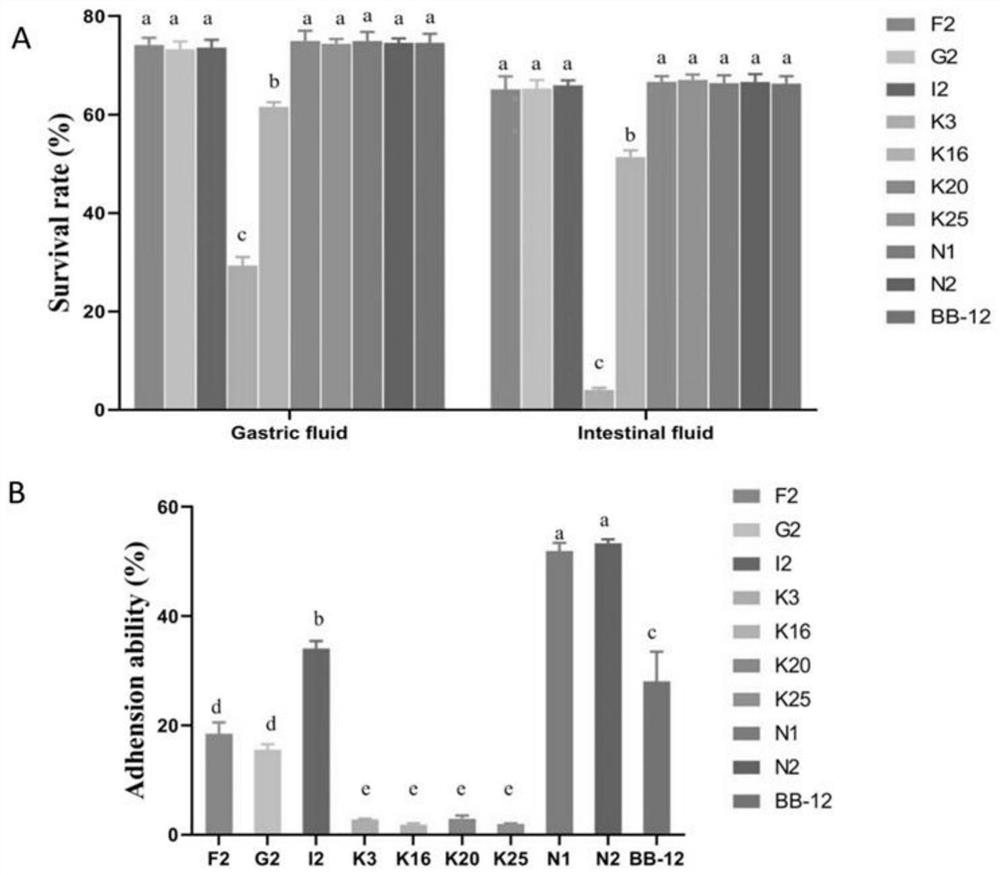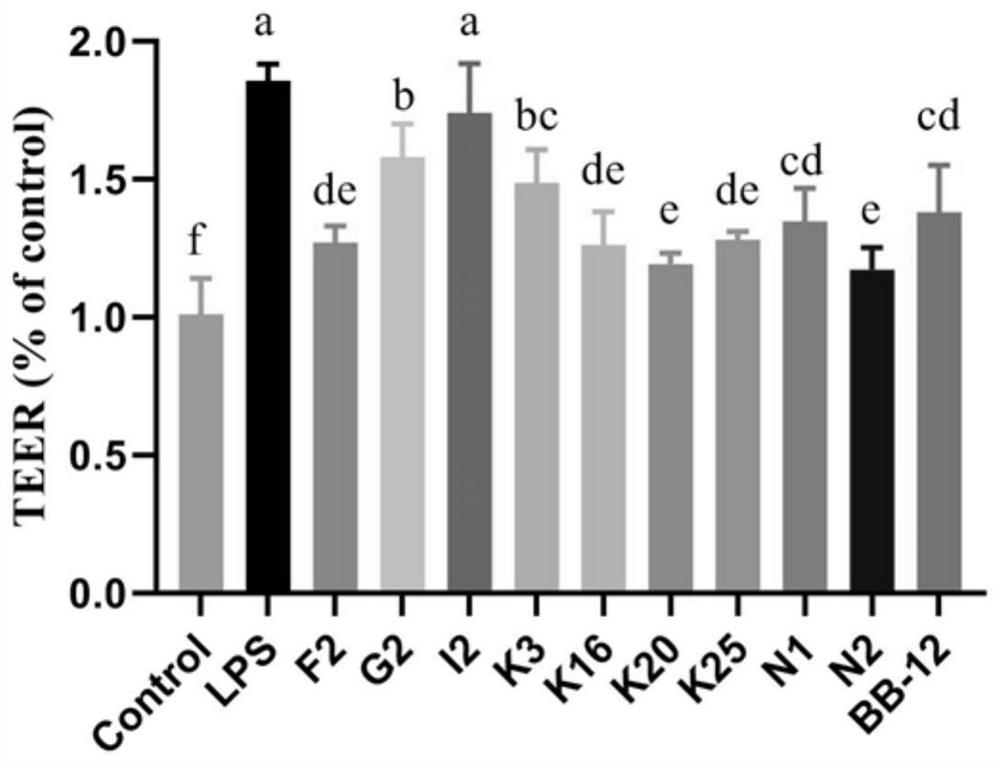A kind of bifidobacteria that can relieve colitis and its application
A bifidobacterium, ulcerative colitis technology, applied in the direction of bifidobacteria, application, bacteria used in food preparation, etc., can solve the problems of no ulcerative colitis prevention and treatment, to protect the intestinal barrier function, Inhibiting inflammation and reducing the effect of disease activity index
- Summary
- Abstract
- Description
- Claims
- Application Information
AI Technical Summary
Problems solved by technology
Method used
Image
Examples
Embodiment 1
[0089]Example 1: Screening, identification, culture, observation and preservation of Bifidobacterium pseudocatenulatum N2
[0090] 1. Filter
[0091] Take 1 g of healthy infant fecal samples from Harbin, apply gradient dilution to MRS solid medium (including rapid screening), and place them in an anaerobic environment at 37°C for 72 hours, observe and record the colony morphology; pick the surface wet , The raised, white and yellowed colonies were streaked on the MRS solid medium, purified and cultured under anaerobic conditions at 37 °C, and this operation was repeated 3 times to obtain a purified single colony; pick a single colony MRS solid medium was streaked and cultured anaerobic at 37°C for 36h.
[0092] 2. Identification
[0093] Extract the genome of the strain obtained by screening, amplify and sequence the 16S rDNA of the strain (the nucleotide sequence of the amplified 16S rDNA is shown in SEQ ID NO. 1), and carry out the obtained sequence in NCBI-Blast The nucl...
Embodiment 2
[0099] Example 2: Preparation of Bifidobacterium pseudocatenulatum N2 bacterial suspension (1) Dip the bacterial liquid of Bifidobacterium pseudocatenulatum N2 from a glycerol tube and spread on MRS solid medium Line, cultured at 37°C for 48h in an anaerobic environment to obtain a single colony; pick a single colony and inoculate it in the MRS liquid medium, cultured at 37°C for 48h in an anaerobic environment for activation and culture, repeat this operation 3 times to obtain the activated bacteria liquid. (2) The activated bacterial liquid obtained in step (1) is inoculated into the MRS liquid medium according to the inoculum amount of 2% (v / v), cultured at 37° C. for 24 hours to obtain a fermentation liquid, and the fermentation liquid is centrifuged to collect bacteria The cells were resuspended in physiological saline, and the number of viable cells was adjusted to 5×10 9 CFU / mL, made into bacterial suspension.
Embodiment 3
[0100] Example 3: Tolerance of Bifidobacterium pseudocatenulatum N2 to the digestive tract: the strain was adjusted to 1.0×10 9 CFU / mL, placed in gastric juice and incubated for 2h, then transferred to intestinal juice and incubated for 2h. The survival rate of the experimental strains was calculated as follows:
[0101]
[0102] Note: N1 is the surviving strain after treatment, and N0 is the total untreated strain.
[0103] Bifidobacterium pseudocatenulatum (Bifidobacterium pseudocatenulatum) N2 had a higher survival rate in the digestive tract and had no significant difference with BB-12. This result shows that Bifidobacterium pseudocatenulatum N2 can survive in the digestive tract.
PUM
 Login to View More
Login to View More Abstract
Description
Claims
Application Information
 Login to View More
Login to View More - R&D
- Intellectual Property
- Life Sciences
- Materials
- Tech Scout
- Unparalleled Data Quality
- Higher Quality Content
- 60% Fewer Hallucinations
Browse by: Latest US Patents, China's latest patents, Technical Efficacy Thesaurus, Application Domain, Technology Topic, Popular Technical Reports.
© 2025 PatSnap. All rights reserved.Legal|Privacy policy|Modern Slavery Act Transparency Statement|Sitemap|About US| Contact US: help@patsnap.com



